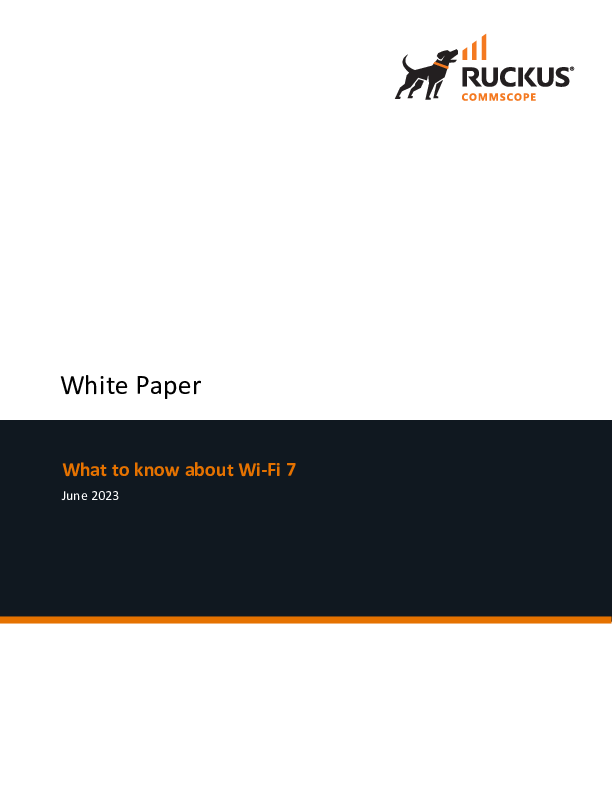

العميل: CommScope Communications Singapore Pte Ltd
الصيغة: مستند تعريفي
الحجم: 741 KB
اللغة: الإنجليزية
التاريخ: 11.02.2025
What to know about Wi-Fi 7
If it doesn’t feel like it has been very long since the introduction of 802.11ax and Wi-Fi 6E, it’s because it hasn’t. When we examine the previous timelines of the PHY amendments to the IEEE 802.11 standard, it’s usually about 4 years or so between amendments. However, there are two specific reasons why it feels really fast for 802.11be (Wi-Fi 7) being released.
802.11ac was released in two waves, but not much fanfare was made about the second wave. The only difference with Wave 2 was the introduction of 160 MHz channel bandwidth. The chipsets at the time weren’t available at the initial release to support that channel bandwidth, so that feature came much later. Since 160 MHz channel bandwidths are impactable for most designs, the impact of Wave 2 was minimal.
When we look at the PHY amendments that came before 802.11ac, they were being released at a rate of about every 4 years. However, the timetable between 802.11ac and 802.11ax was seven years. In the world of technology, seven years is a LONG TIME. Sure, there was 802.11ac Wave 2, but as mentioned, this was not a huge development that many people were waiting on.
When compared to 802.11ax (Wi-Fi 6) and the release of its “Wave 2” which was the 6 GHz band and Wi-Fi 6E, you can’t compare the waves between the two. With seven years of not much to announce between Wi-Fi 5 and Wi-Fi 6, and then four years between Wi-Fi 6 and Wi-Fi 7 with the huge announcement of 6 GHz in the middle, for many it has the feeling that every time they turn around there is a new technology being pushed on them, and it can be overwhelming.
802.11ac was released in two waves, but not much fanfare was made about the second wave. The only difference with Wave 2 was the introduction of 160 MHz channel bandwidth. The chipsets at the time weren’t available at the initial release to support that channel bandwidth, so that feature came much later. Since 160 MHz channel bandwidths are impactable for most designs, the impact of Wave 2 was minimal.
When we look at the PHY amendments that came before 802.11ac, they were being released at a rate of about every 4 years. However, the timetable between 802.11ac and 802.11ax was seven years. In the world of technology, seven years is a LONG TIME. Sure, there was 802.11ac Wave 2, but as mentioned, this was not a huge development that many people were waiting on.
When compared to 802.11ax (Wi-Fi 6) and the release of its “Wave 2” which was the 6 GHz band and Wi-Fi 6E, you can’t compare the waves between the two. With seven years of not much to announce between Wi-Fi 5 and Wi-Fi 6, and then four years between Wi-Fi 6 and Wi-Fi 7 with the huge announcement of 6 GHz in the middle, for many it has the feeling that every time they turn around there is a new technology being pushed on them, and it can be overwhelming.




